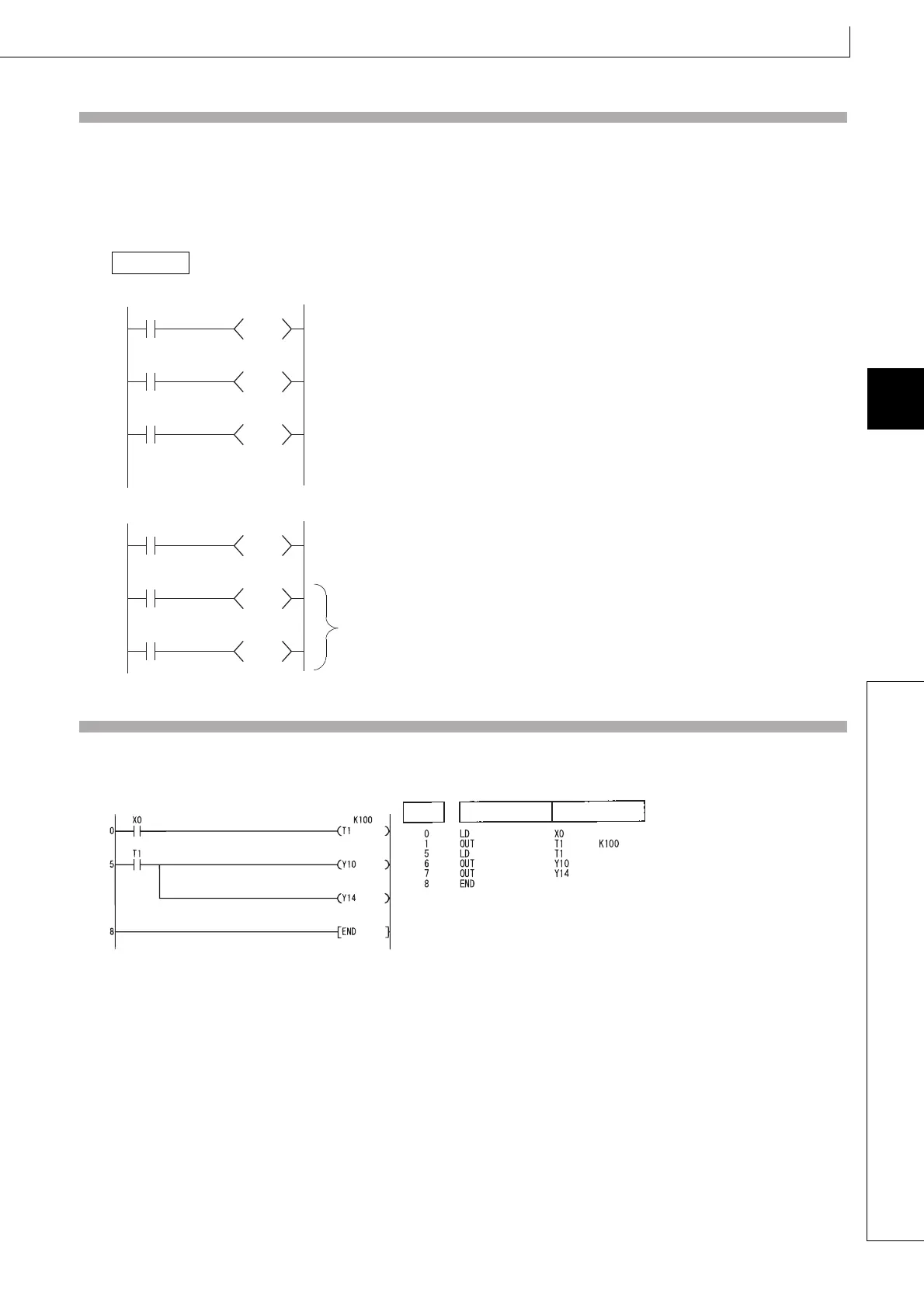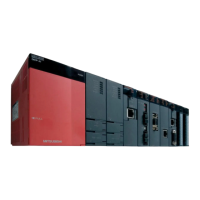143
OUT T, OUTH T, OUT ST, OUTH ST
1
2
3
4
5
6
7
8
5.3 Output Instructions
5.3.2 OUT T, OUTH T, OUT ST, OUTH ST
Caution
(1) When creating a program in which the operation the timer contact triggers the operation of other timer, create the
program for the timer that operates later first.
In the following cases, all timers go ON at the same scan if the program is created in the order the timers operate.
• If the set value is smaller than a scan time.
• If "1" is set
• For timers T0 to T2, the program is created in the order the timer operates later.
• For timers T0 to T2, the program is created in the order of timer operation.
Program Example
(1) The following program turns Y10 and Y14 ON 10 seconds after X0 has gone ON.
[Ladder Mode] [List Mode]
*3: The setting value of the low-speed timer indicates its default time limit (100 ms).
Example
T2 timer starts measurement from the next scan after
turning ON of the contact of T1 timer.
T2
K1
T1
T1
K1
T0
T0
K1
X0
T1 timer starts measurement from the next scan after
turning ON of the contact of T0 timer.
T0 timer starts measurement when X0 is turned ON.
T0
K1
X0
T1
K1
T0
T2
K1
T1
T0
timer starts measurement when X0 is turned ON.
Contacts of T1 and T2 timers are turned ON
when the contact of T0 timer is turned ON.
3*
Step
Instruction
Device
